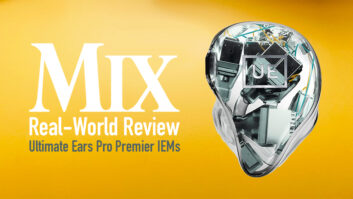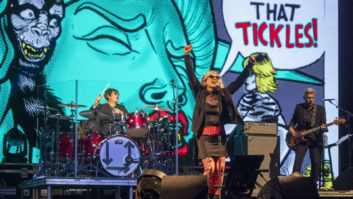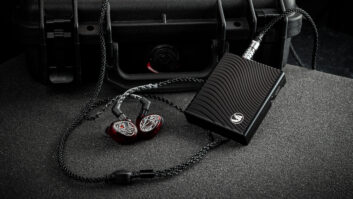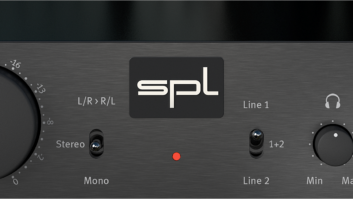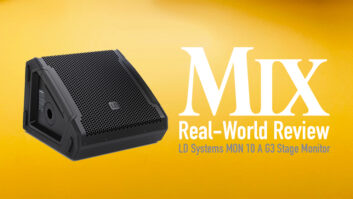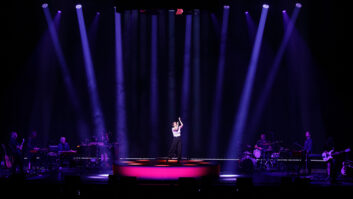Jerry Harvey NEW YORK, NY—In the March 1995 issue of Pro Sound News, I wrote an article about opening night on Van Halen’s “Balance” tour—its last with Sammy Hagar, as it turned out. Tucked away at the end of the story was a small quote from monitor engineer Jerry Harvey, where he talked about some prototype ear molds he’d developed for the personal monitor market, then still in its esoteric infancy. “The prices of current ear molds are $800 to $1,000,” he told me. “This is going to be aimed at the guy at the Holiday Inn who’s in a weekend bar band, that wants to do ear molds and wireless systems.”

It seemed unlikely that IEMs would catch on with the average musician, but time has unraveled a different story since then, and those prototypes laid the foundation for a new company: Ultimate Ears. Today, UE is a well-established brand, worn by musicians at all levels of performing, as well as audiophiles who want a better iPod listening experience. Fifteen years ago, however, even Harvey couldn’t anticipate what lay ahead for personal monitors—or that after leaving IEMs behind, he’d return in 2009 with a new company, JH Audio.
“In ’95, I had no idea how large the market was going to become,” he laughs. “We didn’t know if anyone was going to adopt the technology or if it would even exist in two years. There was a lot of push back from the older bands—they didn’t want anything in their ears. At the time when I saw you, I thought, if I can sell six earpieces a month, that’s my car payment! I had no idea the ride I was about to take, both good and bad.”
Word spread as Ultimate Ears—and personal monitors in general—took off, but what pushed the earpiece market into overdrive was the 2001 introduction of a small, white, mp3 player from Apple. “The iPod singlehandedly grew the personal monitor industry a thousand fold,” says Harvey. “If I had the chance, I would personally thank Steve Jobs for his vision and the way the iPod has helped our market. The audiophiles are extremely critical of audio, so their critical listening and feedback has helped me change the way I design product.”
And make no mistake; while Harvey left Ultimate Ears a while ago (“I sat on the sideline for over two years and watched the industry stagnate,” he opines), he’s still designing products, this time for a new venture: JH Audio. The company debuted last year, sporting new designs that Harvey developed himself. “I spent 18 months designing a new style dual mid and high driver that changed the way IEMs sound drastically when compared to the older single drivers,” he claims. “Once I had the JH13 designed, it was time to come back to the market.”
While JH Audio has seven different models on the live sound side, Harvey readily admits that the JH13 has taken the lead amongst his products’ sales. “It reproduces exactly what you put into it,” he says, remarking, “The dual driver designs have brought the accuracy and detail to the IEMs we build. The transient response is almost four times as fast as the older drivers, and this results in serious detail.”
Both the JH13 6-driver 3-way and JH16 8-driver 3-way use that same technology, and the earpieces are now on the road with the likes of Lady Gaga, Guns N’ Roses, Linkin Park, Doobie Brothers, Rob Thomas, OneRepublic, Aerosmith, Daughtry, Alicia Keys, Jordin Sparks and Counting Crows, to name a few.
Despite the list of high-profile early adopters, Harvey still has an aggressive, “big picture” take on where he thinks his company—and the personal monitor industry—should head next: “I wish the manufacturers of the IEM systems would adopt a more advanced view of what is needed for the Pro market. Currently, the hardware companies are making systems with OK-sounding generics. In real life, the generics don’t cut it, so companies like ours have to make the earpieces perform with their systems. I would like to see a forwardthinking hardware company work with a company like ours to make both the hardware and the ears work together as one unit.”
However, experience making IEMs that make the most of other people’s technology comes in handy for JH Audio’s other marketplace: Aviation. A pilot himself, Harvey found he got headaches from conventional headsets when helming long flights; once he designed an earpiece for himself, it was soon brought to market. With no need to reproduce the bassist’s thundering rig in a tiny driver, it might seem like a comparatively simple product to make, but Harvey is quick to dispel that notion.
“It is much more difficult to design a headset for aviation, because there are so many different types of radios and intercoms used in general aviation planes,” he says. “Plug a headset into an iPod and you know it will work and sound as good as the file. Plug the headset into an IEM system and the headset will be as good as the engineer. Plug the headset into a 1950s aircraft and you might need to tweak it for the customer.”
Regardless of having helped pioneer IEMs, seeing his designs trustingly placed in thousands of ears, or even taking up flying, Harvey is clearly as excited about his new company and its products as he was about the prototypes he showed me when I was a cub reporter on that Van Halen tour years ago. Point blank, he says, “I would have never entered the market again if I had not designed the next-generation IEM. Also, this is what I love—I think about IEMs constantly.”
JH Audio
jhaudio.com
